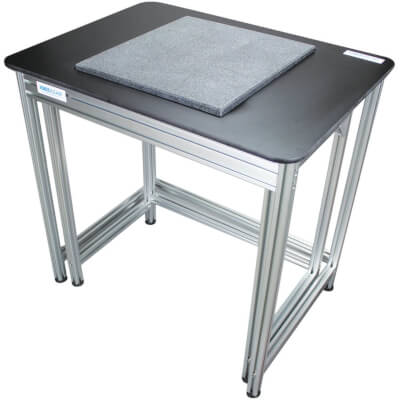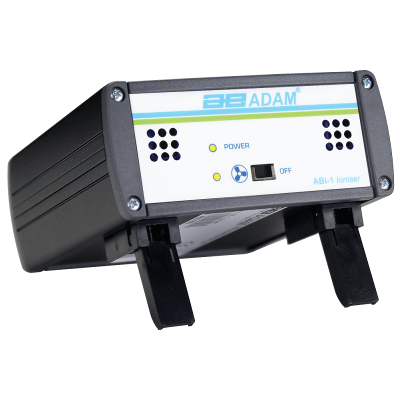Putting together your lab is more than just selecting a balance. Where you place your scale and the accessories you choose are equally important to achieving accurate weighing results. If you’ve ever seen a semi-micro or analytical balance on a regular bench in a lab when the air conditioning turns on, you know this firsthand.
Your balance should be placed on a solid surface in a room with a stable temperature, avoiding a location with direct sunlight and any vibrations, air currents or static electricity. Why? These types of disturbances can affect the balance or the sample (if they’re volatile), which will in turn affect the results.
Your analytical balance likely came with a draft shield, so you’re protected against air currents. Let’s look at how you can mitigate the other potential issues.
Anti-Vibration Tables
So do you really need an anti-vibration table for your analytical balance? The short answer is: most likely. Analytical balances are extremely sensitive devices and can be affected by many environmental factors, including vibrations and air currents.

You may not notice the floor you’re standing upon vibrating, but your balance does. Instead of a zero reading when there’s nothing on the pan, you may see constantly changing readings that won’t settle from a vibration you can’t even feel. They can come from a variety of sources, including the buildings heating and air conditioning system, nearby railroad tracks or even passing cars (yes, your balance is that sensitive!).
Calibration Weights
Proper calibration – verifying an instrument's readings by comparing them against a known standard – is critical to ensure the traceability, reliability and accuracy of your weighing results. If your balance requires external calibration, consider purchasing calibration weights.
The standard you need depends upon your location: in the United States, you’ll probably be using an ASTM set; outside the U.S., OIML weights. If you’re working both within the United States and internationally, consider investing in both types.
When purchasing a new balance, it’s a good idea to purchase a calibration certificate, so you’re assured of proper calibration from the start.
Ionisers
Most people don’t think about static electricity all that often, except maybe for when they’ve walked across a carpet in their socks, then touch something metal and feel that telltale “zap!” as it’s discharged.
While it seems harmless, much like a gentle breeze can affect your balance readings, static electricity can also wreak havoc by causing drift.

Drift is a gradual change in the weighing results despite the load remaining constant. If your sample weighs exactly 1g, your balance obviously shouldn’t change its reading up to 1.002g, then drop to 0.001g before returning to 1.000g.
So how do we protect against static electricity? You can use an ioniser, like Adam’s portable ABI-1. An ioniser corrects the imbalance between the positive and negative charges on an object by charging the surrounding air molecules positively and negatively. The charged molecules on the object are either attracted to the air molecules or pushed away from the object by them, depending on whether their charge is positive or negative.
To use Adam’s ioniser, simply turn it on and place it near the balance. You would hold the sample or the sample container near the ioniser before placing it on the balance’s pan.
Need help selecting a balance or accessories for your lab? Our staff is here to help!




